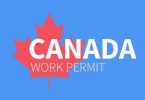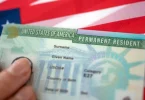Thinking about making the Great White North your new home? Well, you’re not alone. Canada, with its breathtaking landscapes, diverse culture, and welcoming spirit, is a top destination for many looking to start afresh. Whether it’s the promise of a high quality of life, excellent healthcare, or top-notch education, there’s plenty to attract newcomers. But how exactly do you get there? Let’s dive into 10 safe ways you can easily move to Canada.
Express Entry System
What is Express Entry?
Express Entry is like the VIP pass for getting into Canada. It’s a points-based system designed to select skilled workers for immigration to Canada. It’s fast, efficient, and one of the most popular routes for immigrants.
Eligibility Criteria
To get your golden ticket through Express Entry, you need to meet specific criteria. These include your age, education, work experience, and language proficiency in English or French. The higher you score on these factors, the better your chances.
How to Apply for Express Entry
Applying for Express Entry is straightforward. First, create an online profile where you provide detailed information about yourself. Then, based on your profile, you’ll be ranked against others in the Express Entry pool. If you’re among the top candidates, you’ll receive an Invitation to Apply (ITA) for permanent residence.
Provincial Nominee Programs (PNP)
Overview of PNP
While Express Entry is fantastic, it’s not the only way. Provincial Nominee Programs (PNP) allow Canadian provinces and territories to nominate individuals who want to immigrate and settle in a particular province.
Different Provincial Programs
Each province has its own set of PNP streams tailored to their economic needs. For instance, British Columbia has a Tech Pilot for tech workers, while Alberta offers opportunities for entrepreneurs. It’s worth researching which province aligns best with your skills and career goals.
How to Apply for a PNP
To apply, you usually need to show an intention to reside in the province and possess the skills and experience needed. You’ll submit an application to the province, and if nominated, you can then apply for permanent residence through the federal government.
Family Sponsorship
Who Can Be Sponsored?
Family comes first, and Canada recognizes that. Canadian citizens and permanent residents can sponsor close relatives, including spouses, children, parents, and grandparents, to come to Canada.
Sponsorship Requirements
Sponsors must meet specific criteria, including financial stability to support the sponsored person. Additionally, both the sponsor and the sponsored person must meet eligibility requirements set by the immigration authorities.
Application Process
The process involves submitting sponsorship and permanent residence applications together. It’s crucial to ensure all documents are complete and accurate to avoid delays.
Study Permits
Studying in Canada
Canada is home to some of the world’s top educational institutions. Getting a study permit is your ticket to world-class education and an excellent pathway to permanent residency.
Applying for a Study Permit
To apply for a study permit, you need an acceptance letter from a designated learning institution, proof of funds, and a clean bill of health. Once you’ve got these in place, you can apply online or through a visa application center.
Transitioning from a Student to Permanent Resident
Post-graduation, you can apply for a Post-Graduation Work Permit (PGWP), which allows you to gain valuable Canadian work experience. This experience can then help you qualify for permanent residency through the Express Entry system.
Work Permits and Employment Visas
Types of Work Permits
Canada offers various types of work permits, including employer-specific work permits and open work permits. The former ties you to a specific employer, while the latter allows you to work for any employer in Canada.
How to Apply for a Work Permit
The application process depends on the type of permit. Generally, you need a job offer from a Canadian employer and a Labour Market Impact Assessment (LMIA) for employer-specific permits. Open work permits, such as those for spouses of skilled workers, have different requirements.
Pathways from Work Permit to PR
Working in Canada can be a stepping stone to permanent residency. With Canadian work experience, you can qualify for programs like the Canadian Experience Class (CEC) under Express Entry.
Business Immigration Programs
Overview of Business Immigration
Canada welcomes entrepreneurs, investors, and self-employed individuals who can contribute to its economy. There are several programs tailored for business-minded immigrants.
Start-up Visa Program
The Start-up Visa Program targets innovative entrepreneurs with the potential to create jobs for Canadians. To qualify, you need a business that is supported by a designated organization.
Self-Employed Persons Program
This program is for individuals with relevant experience in cultural activities or athletics who can make a significant contribution to the cultural or athletic life of Canada.
Caregiver Programs
Overview of Caregiver Programs
Canada offers specific pathways for caregivers to come and work in the country. These programs are designed to fill the need for caregiving professionals in Canadian households.
Eligibility Criteria
To qualify, you need a valid job offer as a caregiver and meet specific educational and language requirements. Relevant work experience is also a key criterion.
Pathway to Permanent Residency for Caregivers
Caregivers can apply for permanent residency after gaining sufficient work experience in Canada. Programs like the Home Child Care Provider Pilot and the Home Support Worker Pilot provide clear routes to PR.
Refugee and Asylum Pathways
Who Qualifies as a Refugee?
Refugees are individuals who need protection and are unable to return to their home country due to a well-founded fear of persecution.
How to Apply for Asylum
To apply for asylum, you must be physically present in Canada. You can make a refugee claim at a port of entry or at an inland office. Your claim will be assessed by the Immigration and Refugee Board of Canada (IRB).
Support Services for Refugees
Canada offers extensive support services for refugees, including settlement assistance, language training, and help with finding housing and employment.
Atlantic Immigration Pilot Program (AIPP)
What is AIPP?
The Atlantic Immigration Pilot Program (AIPP) aims to attract skilled workers and international graduates to Canada’s Atlantic provinces: New Brunswick, Newfoundland and Labrador, Nova Scotia, and Prince Edward Island.
Eligibility and Requirements
Eligibility requirements include a job offer from a designated employer in one of the Atlantic provinces, relevant work experience, and meeting specific educational and language criteria.
Application Process
The process involves getting a job offer from a designated employer, securing a provincial endorsement, and then applying for permanent residence.
Rural and Northern Immigration Pilot (RNIP)
Overview of RNIP
The RNIP is designed to attract skilled workers to rural and northern communities in Canada. It aims to support the economic development of these areas.
Participating Communities
Several communities participate in the RNIP, each with its own specific requirements and job opportunities. Examples include North Bay, Sudbury, and Thunder Bay.
How to Apply
To apply, you need a job offer from an employer in a participating community and meet the program’s eligibility criteria. The community will then recommend you for permanent residency.
Agri-Food Immigration Pilot
What is the Agri-Food Pilot?
The Agri-Food Immigration Pilot targets workers in the agri-food sector to help address labor shortages in this industry.
Eligibility Criteria
To qualify, you need to have work experience in specific agri-food industries, a job offer from a Canadian employer, and meet other requirements related to education and language skills.
Application Process
The application process involves securing a job offer, meeting the eligibility criteria, and submitting an application for permanent residency.
Conclusion
Canada offers numerous pathways for those looking to make it their new home. From skilled worker programs like Express Entry to family sponsorships and business immigration, there’s a route for almost everyone. Thorough research and careful preparation are key to successfully navigating the immigration process. So, take the plunge, and soon you might find yourself enjoying all that Canada has to offer.
FAQs
What is the fastest way to immigrate to Canada?
The fastest way to immigrate to Canada is often through the Express Entry system, which can process applications in as little as six months for high-ranking candidates.
Can I move to Canada without a job offer?
Yes, it’s possible to move to Canada without a job offer, especially through pathways like the Express Entry system, which focuses on your overall profile rather than specific employment.
How much money do I need to move to Canada?
The amount of money you need depends on the immigration program you apply through. For Express Entry, you need to show proof of funds to support yourself and your family. This amount varies depending on the size of your family but starts at around CAD 13,000 for a single applicant.
Is it easy to get permanent residency in Canada?
While it’s not necessarily easy, many pathways are available. The key is to meet the eligibility criteria and prepare a strong application. Programs like Express Entry, PNP, and family sponsorship provide structured routes to PR.
Can I move to Canada with my family?
Yes, many immigration programs allow you to move to Canada with your family. Programs like family sponsorship, Express Entry, and PNPs are designed to help families stay together.





